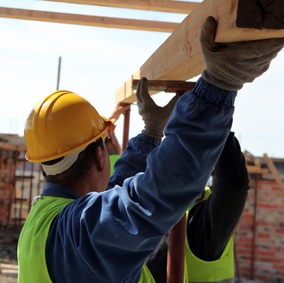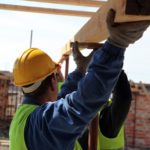Protect Your Ears- Protecting Hearing Longevity

By: Kathleen Murray, Capstone Brokerage Client Advocate, March 22, 2018
Hearing is one of the traditional five senses. We take our hearing for granted until hearing loss becomes outwardly noticeable which is usually when deafness or partial deafness occurs. Hearing loss can happen to anyone at any age although age-related hearing loss becomes more noticeable in the 50’s and 60’s.
Occupational hearing loss is one of the most common work-related illnesses in the United States. About 22 million U.S. workers are exposed to hazardous levels at work. Over 30 million workers are exposed to chemicals, some of which are harmful to the ear (ototoxic) and hazardous to hearing. According to the Center for Hearing and Communication, some of the disturbing statistics about hearing loss are:
• 48 million Americans have a significant hearing loss
• Over 90% of deaf children are born to hearing parents
• 14% of those ages 45-64 have some type of hearing loss
• 15% of children between the ages of 6-19 have a measurable hearing loss in at least one ear
• Exposure to a noisy subway, for just 15 minutes a day, over time, can cause permanent hearing damage
• Listening to an MP-3 player, over time, at high volumes can cause permanent hearing damage
• People with hearing loss wait an average of 7 years before seeking help
Even more disturbing is that the ears become accustomed to noise and the brain accepts it as normal, after a short while. Noise-induced hearing loss cannot be reversed. Some of the symptoms of long-term exposure to high levels of noise include deafness, tinnitus (ringing in the ears), anxiety, depression, stress and headaches.
How to Protect Hearing Health:
• Wearing and maintaining all hearing protection provided by your employer, which might be provided such as expandable foam plugs conforming to the shape of a person’s ear; Using pre-molded plugs made from silicone, plastic or rubber; Canal caps, which are similar to ear plugs, but come on a flexible plastic or metal band.
• Asking questions about noise levels, hearing protection, and other noise and hearing related issues as soon as you have a concern. Hearing Protection Standard (OSHA Standard 29 CFR 1910.95) states that employees must understand how to protect their hearing. OSHA’s standards can be obtained in the OSHA website under
(http://www.osha.gov/SLTC/noisehearingconservation/).
It is important to be reminded that there are two types of hearing hazards associated with loud noise.
1. Sudden Bursts of Noise: Loud noise such as gunshots or explosions and the “booming” sound of fireworks. Sudden burst of noise is a serious risk that can cause immediate, irreparable hearing damage. In the workplace, these types of sudden loud noises often come from machine presses, constant humming of machines, drill presses, heavy drills, hammers, or any other object that causes sudden loud noises. There must be signs or other notifications stating people should wear hearing protection at all times.
2. Prolonged Noise Exposure: The decimals or “dBs” are lower, but not less dangerous.
How Loud is Loud?
The limits, as stated by OSHA 1910.95 are:
• 90dB – Environments that have consistent noise below 90dB do not have to provide hearing protection unless an employee will be exposed for 8 or more hours.
• 92dB – Any employee who will be exposed to noise at this level needs hearing protection if exposed for 6 hours.
• 95dB – At this level, it is safe to be exposed without protection for up to four hours.
• 97dB – At 97dB someone can be exposed to the sound for up to three hours without hearing protection.
• 100dB – 100dB is only safe for about two hours, according to OSHA.
• 102dB – At 102dB, someone should get protection if they will be exposed for more than 1.5 hours.
• 105db – People in this environment for one hour need hearing protection.
• 110dB – It is only safe to be around 110dB for 30 minutes or less before hearing protection is needed.
• 115dB – Noise at this volume is only safe for up to 15 minutes without protection
Resources: Center for Hearing and Communication, “Statistics and Facts About Hearing Loss”; OSHA 1910.95: Tables of Standards: https://www.osha.gov/pls/oshaweb/owadisp.show_document?p_tableofstandards&p_id975.
Categories
- Benefits Resources
- Bonding
- BOP
- Business Insurance
- Commercial Auto
- Commercial Property
- Company News
- Construction
- Crime Insurance
- Cyber Insurance
- Directors & Officers
- Employee Benefits
- Employment Practice Liability Insurance
- Entertainment
- General Liability
- Health Insurance
- Healthcare
- Healthcare Reform
- Homeowners Insurance
- Hospitality
- Manufacturing
- Medical Malpractice
- Mining & Energy
- Nightclubs
- Personal Auto
- Personal Insurance
- Professional
- Restaurants
- Retail & Wholesale
- Risk Management Resources
- Safety Topics
- SBA Bonds
- Security
- Seminars
- Technology
- Tourism
- Transportation
- Uncategorized
- Workers Compensation
Archives
- May 2021
- November 2020
- October 2020
- September 2020
- August 2020
- July 2020
- June 2020
- May 2020
- November 2018
- September 2018
- August 2018
- May 2018
- April 2018
- March 2018
- February 2018
- January 2018
- December 2017
- November 2017
- October 2017
- September 2017
- August 2017
- July 2017
- June 2017
- May 2017
- April 2017
- March 2017
- February 2017
- January 2017
- October 2016
- September 2016
- August 2016
- July 2016
- June 2016
- May 2016
- April 2016
- March 2016
- February 2016
- January 2016
- December 2015
- November 2015
- October 2015
- September 2015
- August 2015
- July 2015
- June 2015
- May 2015
- April 2015
- March 2015
- February 2015
- January 2015
- December 2014
- November 2014
- October 2014
- September 2014
- August 2014
- July 2014
- June 2014
- May 2014
- April 2014
- March 2014
- February 2014
- January 2014
- December 2013
- November 2013
- October 2013
- September 2013
- August 2013
- July 2013
- June 2013
- February 2013
- November 2011
- October 2011
- September 2011
- July 2011
- June 2011
- March 2011
- November 2010
- October 2010
- September 2010
- April 2010
- February 2010
- November 2009
- October 2009
- November 2008
- August 2008

